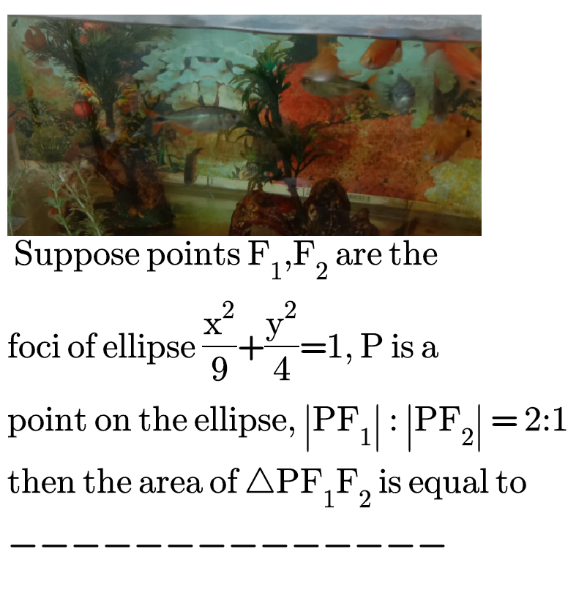
Question and Answers Forum
Relation and FunctionsQuestion and Answers: Page 10

|
Question and Answers Forum |
Relation and FunctionsQuestion and Answers: Page 10 |
| find ∫_0 ^1 log(x)log(1−x)log(1−x^2 )dx |
| Dl of f(x)=(√(x(1+x)))e^(3/(2x)) .. |
| let s(x)=Σ_(n=1) ^∞ (((−1)^n )/((2x^2 +2x(√(1+x^2 ))+1)^n )) 1) explicite s(x) 2) calculate ∫_0 ^1 s(x)dx |
| find ∫_0 ^1 e^(−x) (√(1+x^2 ))dx (approximat value) |
| f(x+y)=f(x)+f(y)+xy for all x and y fromR and f(4)=10 calculate f(1319) |
| f(x)=e^(−x) arctan((3/x)) 1)find f^((n)) (3) 2)give taylor developpement for f at x_0 =3 3)find ∫_0 ^∞ f(x)dx |
| let A_n =∫_0 ^(2nπ) (dx/((2+cosx)^2 )) explicit A_n and determine nature of serie Σ A_n |
| Developpement limite^ ge^ ne^ ralise^ au voisinnage de −∞ de g(x)=((√(1+x^2 ))/(1+x+(√(1+x^2 )))) et de^ duire une asymptote en −∞ ainsi que sa position relative par rapport a la courbe. |
| Developpement limite^ a l′ordre 2 de g(x)=((√(1+x^2 ))/(1+x+(√(1+x^2 )))) |
| ϕ(x)=ln(((e^(x+cos(x)) −e)/(x+x^2 ))) montrer que ϕ se prolonge par continuite^ en 0. on note ψ son prolongement, montrer que ψ est de^ rivable en 0.. Ainsi donner une e^ quation de la tangente, position de la courbe par rapport a la tangente, et faire le dessin.. |
| de^ rive^ e n-ie^ me de (x^3 /(1+x^6 )) |
| Given a polynomial p(x)=x^4 +4x^3 +(2p+2)x^2 +(2p+5q+2)x+3q+2r. If p(x)= (x^3 +2x^2 +8x+6)Q(x) then what the value of (p+2q)r . |
| calculate Σ_(n=0) ^∞ arctan(((2n+1)/(n^4 +2n^3 +n^2 +1))) |
| (5^(log _(5/3) (5)) /3^(log _(5/3) (3)) ) =? |
| If F(x+1)=F(x−1)=x^2 then F^(−1) (x)=? |

|
| let g(x)=log(cosx +2sinx) developp f at fourier serie |
| calculate Σ_(n=1) ^∞ ((cos(nθ))/n^2 ) |
| find Σ_(n=1) ^∞ (x^n /n^2 ) |
| let f(x)=log(cht) developp f at fourier serie |
| calculate Σ_(n=0) ^∞ (1/(n^2 +4)) |
| find ∫_0 ^∞ ((arctan(x^n ))/x^n )dx (n≥2) natural |
| f(x)=(2/((1+sinx)^2 )) developp f at fourier serie |
| calculate ∫_0 ^(4π) (dx/((2+cosx)^2 )) |
| find ∫_0 ^∞ ((log^2 x)/((x^2 −x+1)^2 ))dx |
| find ∫_0 ^∞ e^(−3x) log^2 (1+e^(2x) )dx |